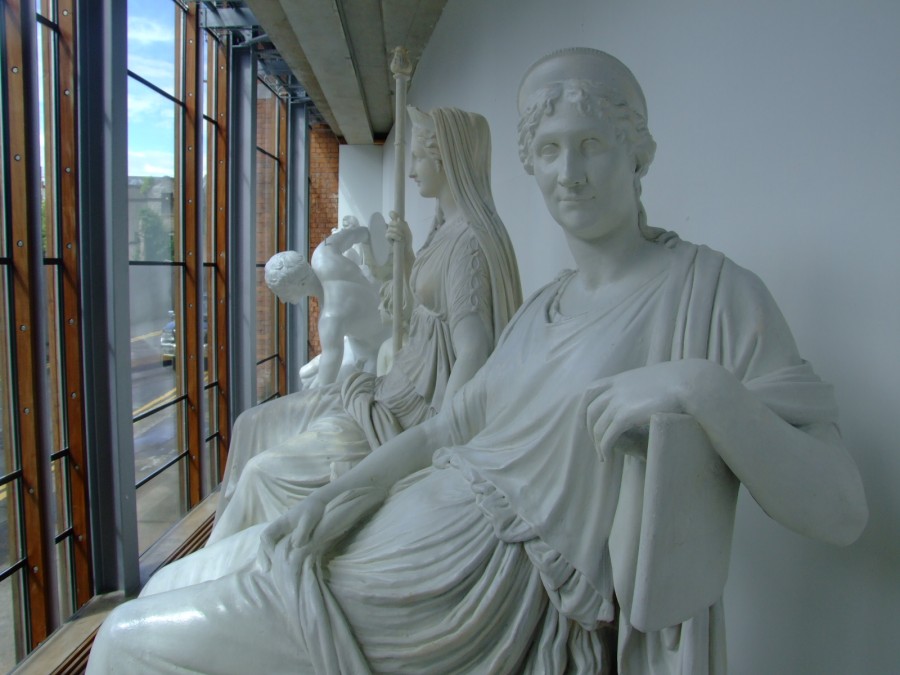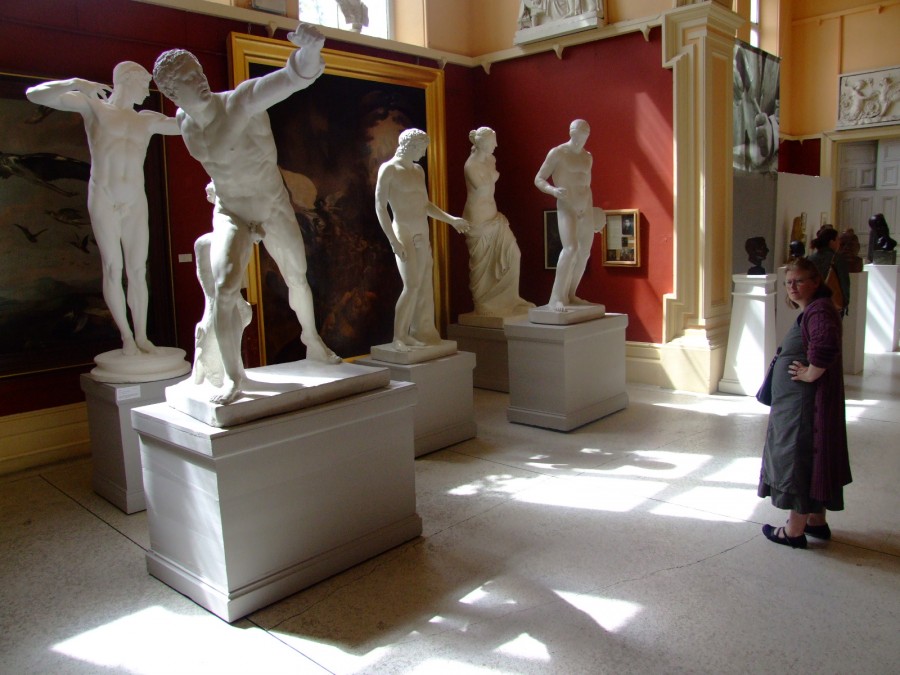Kieran’s Our City, Our Town Article,
Cork Independent, 25 October 2018
A Gift from the Vatican – The Canova Casts
Two hundred years ago this week, a ship from the UK containing 219 sculpture casts arrived into Cork. The acquisition of classical casts made an important contribution to Cork burgeoning art scene and in today’s Crawford Art Galley a cross section of them form the centre of an impressive sculpture display. Their context and journey to Cork is a unique story. Circa 1810, Pope Pius VII was anxious to express his gratitude to the English people for the return to the Vatican Galleries of many masterpieces looted by Napoleon Bonaparte. The Pope commissioned Italian artist, Antonio Canova, to make a set of over one hundred casts from the classical collection in the Vatican.
Canova (1757-1822) was deemed the greatest sculptor of his time and his name was renown across Europe. A student of antiquity, he had interests in Roman restoration projects of artwork. His early work of a statuette of Apollo Crowning Himself, which he entered into a competition organised by the Venetian aristocrat Don Abbondio Rezzonico. This work led to a large successful line of marble statue commissions across Europe comprising Holland, Austria, Poland, Russia, and England. In France Napoleon Bonaparte was a patron of his commissioning large amounts of work and artistic depictions of Napoleon posing as the Roman God of War. Members of Napoleon’s family were also depicted in marble casts such as his sister, second wife and mother (appears in the Crawford Art Gallery). In 1802, be was given the post of Inspector-General of Antiquities and Fine Art of the Papal State.
As a diplomatic gesture, in 1812, a set of Canova casts were shipped to London by the Vatican as a gift to the Prince Regent, later George IV. The Prince showed a lack of appreciation towards his papal acquisitions and the casts lay firstly in the London Custom House and then in the basement of his residence in Carleton Gardens. William Hare, 1st Lord Listowel of Convamore, Co. Cork (beside the River Blackwater), was a patron of the arts and as friend of the prince suggested that they be donated as a gift to the people of Cork.
The Prince Regent donated the casts to the Society of Fine Arts in Cork City, whose premises was located on what is now the intersection of St Patrick’s Street and Opera Lane. An article in the Belfast Newsletter notes that the casts were shipped on Saturday 24 October 1818 – arriving a few days after. A contemporary account best tells the story of this event, more especially when it comes from a manuscript autobiographical sketch written by one of the greatest beneficiaries from the casts, Corkman Daniel Maclise.
“A former theatre once supported by the Apollo Society of Amateur Actors was fixed upon as the most suitable place for the reception of the valuable collection of casts. It was situated in a principal street, Patrick Street, and the stage was screened off by a well-painted scene of the interior of a Greek temple. The pit was boarded over and the gallery was partitioned off. The boxes remained only as they were, and the statues were arranged around the Parterre with much taste on moveable pedestals under the Superintendence of a London gentleman who was sent over for the purpose, and whose name happened appropriately enough to be Corkaigne”.
Shortly after the acquisition, the Cork Society of Fine Arts suffered financial difficulty and could not pay the rent of the premises in which the casts were kept. Under considerable embarrassment, they applied to the government for monetary aid. The Westminster Government and under the recommendation of the Lord Lieutenant of Ireland stated they could grant no aid but recommended them to amalgamate with the Royal Cork Institution. An arrangement was made that the Royal Cork Institution should attain the casts and pay the debt of £500-£600 that was contracted by the Society of Fine Arts. A compromise was made of £300 and the casts were moved to the Institution’s premises on Jameson Row.
For several years after, a Dr John Woodruffe used the casts as part of his classes in anatomy in the city. He leased a building in Margaret Street in the South Parish and offered a course of “Anatomical and Surgical Lectures”, which involved drawing and dissection. John welcomed all aspiring art students or medical students or members of the military. Young artists could develop their talent for drawing human figures. Two students Daniel Maclise and John Hogan went to have great careers in the art world. At the age of sixteen, Corkman Daniel Maclise (1806- 1870) finally exchanged a banking desk for the easel, managing to maintain himself by the sale of his sketches. His early works showed a marked attention to form rather than colour. His compositions tended to be set-pieces, composed of groups of figures telling a story. His first money was earned by drawing portraits of all the officers of the 14th Light Dragoons (a garrison of soldiers), who were then stationed in the city.
During his time as a student of John Woodruffe’s, Waterford man John Hogan (1800-1850) carved a pine-wood skeleton that remained long in use for Woodroffe’s anatomy lectures. By 1820, John Hogan had left Thomas Deane’s office to devote his career to wood-carving and sculpting. Hogan’s first patron was the Catholic Bishop of Cork, Dr Murphy, himself a friend of Antonio Canova. The Bishop kept him busy for a year, commissioning him to carve twenty-seven figures, three and a half feet high, of apostles and saints, which can now be viewed in SS Mary and Anne’s Cathedral as well as a carved copy of Leonardo de Vinci’s Last Supper in bas-relief for the altar.
Kieran’s new book, Cork in Fifty Buildings (2018, Amberley Publishing) is now available in Cork bookshops.
Kieran is also showcasing some of the older column series on the River Lee on his heritage facebook page at the moment, Cork Our City, Our Town.
Captions:
969a. Antonio Canova’s cast of Mother of Napoleon in the Crawford Art Gallery (pictures: Kieran McCarthy)
969b. Antonio Canova casts in the Crawford Art Gallery

